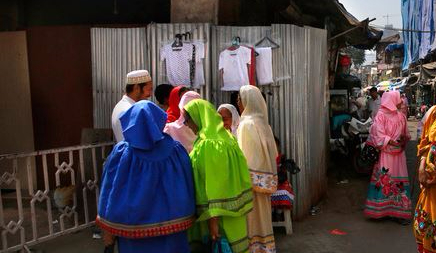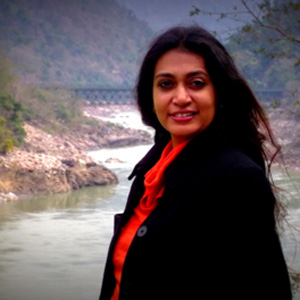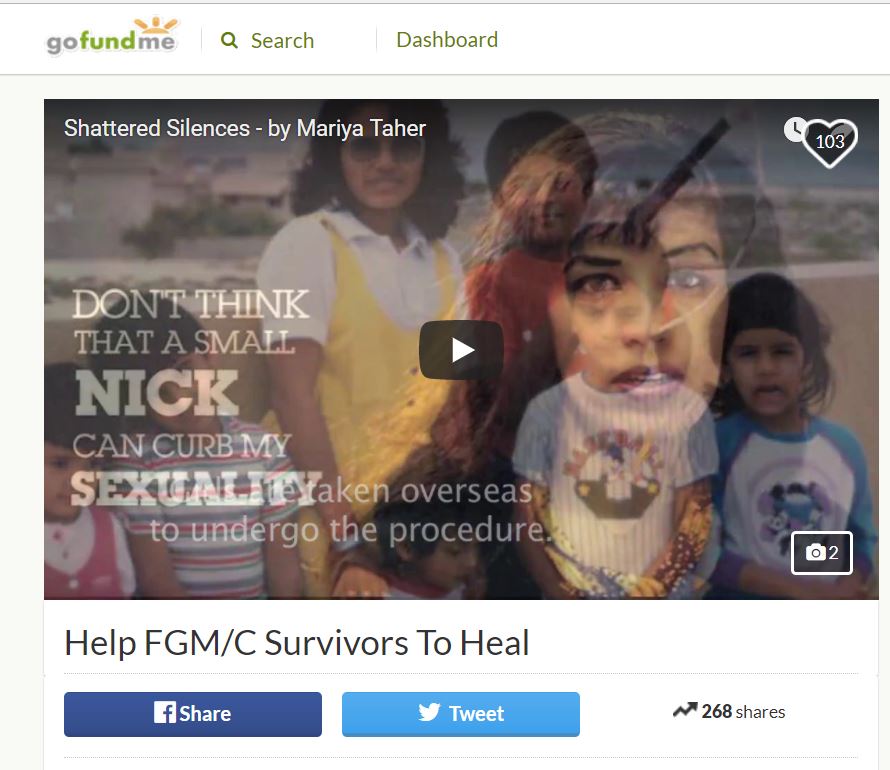લેખિકા : ઈન્સિયા
વય : ૩૪ વર્ષ
શહેર : મુંબઈ, ભારત
હું એક જાણીતા અને સુશિક્ષિત પરિવારની સભ્ય હોવાથી મને હંમેશા કશુંક જુદું વિચારવાની તક મારા કુટુંબે આપી છે. અમારી કોમના નિયમોને ધ્યાનમાં લીધાં વિના, મારા માતાપિતા હંમેશા મને ટેકો આપતા આવ્યા છે. મને શિક્ષણ અપાયું હતું અને મારા ભાઈઓની જેવા સરખા અધિકારો અપાયા હતા. મારી વાતની કદી ઉપેક્ષા નહોતી કરાતી અને મારા અભિપ્રાયોને ધ્યાનમાં લેવાતા હતા. હું એક દીકરી હતી, પરંતુ મારી સાથે એક દીકરા જેવા વ્યવહાર કરાતો હતો.
પણ અમારી કોમ સહેજ વધુ એકબીજાની સાથે નજીકથી સંકળાયેલી હોવાથી, મારે શું કરવું જોઈએ તે વિશે બોલવાનો દરેકને અધિકાર હતો. મારા પરિવારમાંની તમામ મહિલાઓ અમારા પર તેમના વિચારોને પ્રભાવ પાડી રહી હોવાથી, મારી વય જ્યારે સાત વર્ષની હતી ત્યારે મારી માતા સંમત થયાં હતાં કે મારે ખત્ના કરાવવી જોઈએ.
એ દિવસ મને આજે હજી પણ સ્પષ્ટપણે યાદ છે. મારી ખત્ના કરાવવા માટે મારી માતા અને માસી પુણેમાં આ મહિલાના ઘરે લઈ ગયાં હતાં. કદાચ હવે દુ:ખાવો મને યાદ નહીં આવે, પરંતુ એ દિવસનો ભય, ઉદાસીનતા અને અવિશ્ર્વાસ હજી કાયમ છે. મારી અનેક પિત્રાઈ બહેનો હજી મને પૂછે છે, ‘‘જે કંઈ બન્યું તે વિશે તું શા માટે આટલી બધી વ્યથિત છે? શું તેથી આપણે કોઈ પણ રીતે બદલાયાં છીએ?’’
હું સંમત થાઉં છું કે ખત્નાથી સેક્સ (જાતીય સુખ) માણવા પ્રત્યેની મારી ઇચ્છા કદાચ નહીં બદલાઈ હોય, પરંતુ આપણી માતાઓ પ્રત્યેનો મારો દૃષ્ટિકોણ બદલાયો છે. જેઓ આપણને એવું જણાવે કે આપણને બળજબરીથી કોઈ સ્પર્શ કરે, ખાસ કરીને આપણાં ગુપ્તાંગોને સ્પર્શ કરે એ ખોટું છે, પરંતુ તો પછી તેઓ જાતે એક અજાણી મહિલાની પાસે શા માટે લઈ જાય છે? જે આપણી પેન્ટ ઉતારી પાડે છે અને આપણને સ્પર્શ કરે છે? આપણી માતાઓ અને માસીઓ-કાકીઓ કેમ એવું નથી વિચારતાં કે સાત વર્ષ એવી વય નથી કે જે વયે બાળકો તેમની સાથે શું કરાઈ રહ્યું છે, તેને સમજવા કે તેનો વિરોધ કરવા પૂરતા પ્રમાણમાં સક્ષમ છે. તેમને એવી પ્રતીતિ કેમ નથી થતી કે આની આપણા પર એવી માનસીક અસર પડશે કે જે પાછળથી આપણાં માતાપિતાને તેમના નિર્ણય બદલ ખેદ દર્શાવતાં કરી મૂકશે.
બાળજન્મની વેદના મને યાદ નથી, પરંતુ મેં અનુભવેલી લાગણીઓ મને આજે પણ જેમની તેમ યાદ છે. આજની કુમળી કન્યાઓ માટે પણ આ વાત લાગુ પડે છે. પુખ્ત વયની મહિલાઓ માટે ખત્નાની પ્રથા નાબૂદ કરવી જોઈએ કે નહીં તેનો નિર્ણય હું લઈ નહીં શકું, પરંતુ કુમળી કન્યાઓની ખત્ના નહીં કરવી જોઈએ એવું મારું ચોક્કસપણે માનવું છે, બાળપણ તમારાં બાળકોને એવી ખાતરી કરાવવા માટે હોય છે કે તેઓ સુરક્ષિત છે અને તમે તેમને નહીં ડરાવો એવો તેમને વિશ્ર્વાસ હોય છે. આપણી કન્યાઓને મોટી થવા દો. તેમના શરીરમાં આપણે જે કોઈ ફેરફારો કરવા માગીએ છીએ તે વિશે તેમને માહિતગાર કરો. આપણા મઝહબ વિશે આપણાં બાળકોને આપણે કેળવીએ, નહીં કે પ્રથા-રિવાજો વડે તેમને ગભરાવીએ.
મને ખબર છે કે ઘણા લોકો મારી વાત સાથે સંમત નહીં થાય અને ભલે તેઓ અસંમતિ દર્શાવે. કારણકે હું ફક્ત મારો દૃષ્ટિકોણ રજૂ કરવા માગું છું. હું બે દીકરીઓની માતા છું. મને ખબર છે કે મારી અથવા અમારા વડીલોની માન્યતાઓને અનુસરવાની તેમને ફરજ નહીં પાડીને તેમના જીવનને હું બહેતર બનાવી શકું. હું તેમને એવી કેળવણી આપવા માગું છું કે આપણી કોમ એક એવી પ્રગતિશીલ કોમ છે, જ્યાં આપણે આત્મવિશ્ર્વાસી, શિક્ષિત મહિલાઓ છીએ, જેઓને ઉદ્યમશીલો (કામકાજમાં પાવરધા) બનવા માટે શિખવાડાયું છે અને આપણે ઇચ્છીએ છીએ એવો રસ્તો પસંદ કરવાનો અધિકાર તેઓ ધરાવે છે.
આપણી કોમમાંની દીકરીઓની તમામ માતાઓ, કૃપયા હું શું જણાવી રહી છું તે વિશે સહેજ વિચાર કરે. આપણી દીકરીઓને મોટી થવા દો અને પોતાની પસંદગીઓ કરવા દો. તેમના વતી આપણે નિર્ણયો નહીં લેવા જોઈએ.
This article was published in English on May 29, 2017. You can find the English version here.




